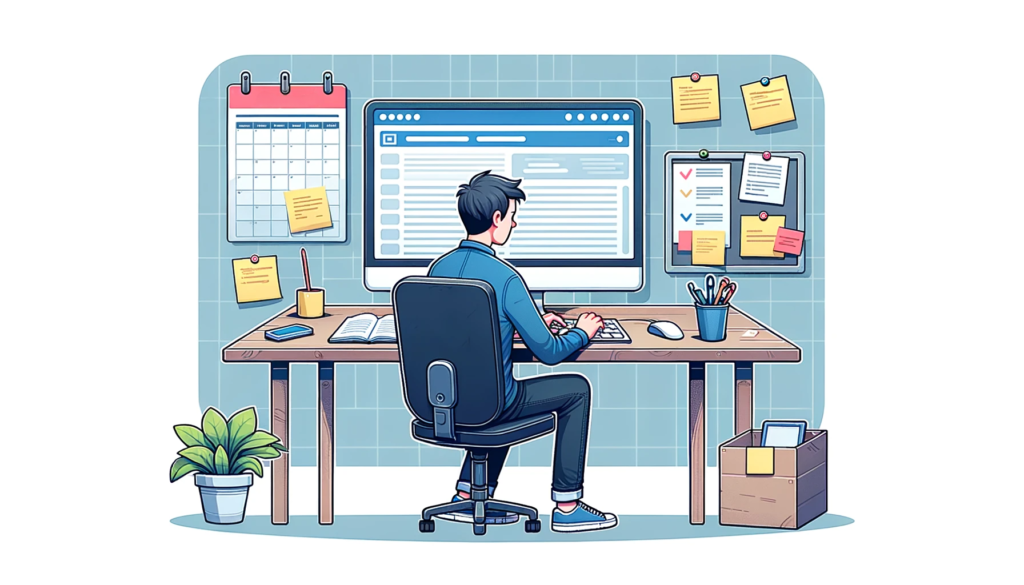Today, we’re diving into a crucial yet often underappreciated aspect of product development: risk assessment.
Whether you’re launching a new product or updating an existing one, risk assessment is essential for maintaining the quality, security, and feasibility of your product, and ultimately, the success of your business.
But how does artificial intelligence fit into this picture, and more specifically, how can ChatGPT, one of the most advanced AI tools out there, help you navigate the often treacherous waters of risk assessment? Let’s dive in.
Risk assessment, as you might already know, involves identifying and evaluating potential issues that could negatively impact key business initiatives or critical projects to ensure their success. Some common risks include budget overruns, missed deadlines, regulatory compliance issues, or even total project failure.
Now, let’s consider why and how you can effectively leverage AI, and in particular, ChatGPT, to manage these risks.
The Intersection of ChatGPT and Risk Assessment
You might be thinking “how exactly does ChatGPT aid in risk assessment for product development?” Well, let’s find out:
Risk Identification: This is where ChatGPT shines. You can present your product plans to ChatGPT, and it can generate a list of potential risks. This isn’t based on some pre-programmed list, but on patterns and issues it’s learned from its training data. ChatGPT can identify both common risks, like budget overruns or scope creep, and more nuanced ones, such as potential user experience issues or regulatory challenges that you might not have considered.
Risk Evaluation: Once potential risks have been identified, they need to be evaluated based on their likelihood and potential impact. While the final judgement call should always rest with human experts, ChatGPT can provide valuable input. For instance, it can help weigh the potential severity of different risks based on the data it’s been trained on.
Risk Management: But identifying and evaluating risks is only part of the equation. The true value of risk assessment lies in how you respond to these risks. This is another area where ChatGPT can assist. When it identifies potential risks, it doesn’t just leave you hanging. It can also suggest potential mitigation strategies based on strategies that have worked in similar situations. It’s important to note that while ChatGPT’s suggestions are data-driven, they should serve as guidance and be adapted to your specific context and needs.
The integration of ChatGPT in the risk assessment process can drastically increase efficiency and proactive planning. By leveraging its capacity to draw from a wealth of information and generate insights in real-time, product managers can get a more comprehensive view of potential risks and start formulating strategies to mitigate them before they escalate into real problems.
Remember, the power of AI in risk assessment isn’t about replacing human judgement. It’s about augmenting our capabilities and enabling us to make more informed decisions for successful product development.

Step-by-Step: Using ChatGPT for Risk Assessment
Risk assessment, especially in the context of product development, can seem like a daunting task. However, with the help of artificial intelligence tools like ChatGPT, the process becomes more manageable and insightful. Let’s delve into a step-by-step process on how to leverage ChatGPT for risk assessment in product development:
1. Define your product development plan
The first step is to articulate your product development plan clearly. This includes your goals, target audience, features, technology stack, and any other details that are pertinent to your product or feature. Remember, the more specific and comprehensive your plan is, the more effectively ChatGPT can assist in the risk assessment.
2. Input your plan into ChatGPT
Once you have a well-defined plan, the next step is to communicate it to ChatGPT. This doesn’t mean simply inputting a few keywords or a brief summary. Instead, present a comprehensive description of your plan to ChatGPT, as this will allow it to draw from the breadth of its training data to provide the most accurate risk assessment.
3. Ask ChatGPT for risk assessment
Now it’s time to ask ChatGPT to identify potential risks that could emerge during your product’s development process. Remember to ask specific questions about various aspects of your plan—like budget, timeline, technology, or user experience—to get a comprehensive view of potential risks.
Here are some questions you can ask ChatGPT:
Budget:
- “What are some potential budgetary risks associated with the development of a feature like ours?”
- “Could you suggest scenarios where we might exceed our budget in the development process?”
- “How might unforeseen costs impact our budget and what could be some sources of such costs?”
Timeline:
- “What factors could potentially delay our product development timeline?”
- “Could you identify potential risks that might arise due to tight development deadlines?”
- “What are common time-related risks associated with a project of this nature?”
Technology:
- “What are some technological risks involved in developing a product with our chosen tech stack?”
- “Could there be compatibility issues or risks with our selected technologies?”
- “What are the potential risks if a technology we’re relying on becomes obsolete during our development process?”
User Experience:
- “What user experience risks could we face when developing this type of product or feature?”
- “Could you outline potential risks associated with user interface design or user journey in our plan?”
- “What are some risks that might impact user satisfaction and engagement with our product?”
4. Evaluate the identified risks
Once ChatGPT generates a list of potential risks, you need to systematically evaluate each one. This is where using a proven risk assessment framework can be particularly helpful. One such framework is the Risk Impact/Probability Chart, which allows you to visually map out risks based on their likelihood and potential impact.
Here’s how to implement this framework:
1. Determine Probability: Assess each risk on how likely it is to occur. This could be based on historical data, expert opinion, or ChatGPT’s input. It’s typically represented on a scale from 1 (least likely) to 5 (most likely).
2. Assess Impact: Next, consider the potential impact if the risk were to materialize. Impact can relate to various aspects like budget, timeline, or overall project objectives. This is also usually rated on a scale from 1 (lowest impact) to 5 (highest impact).
3. Plot the Risks: Now, plot each risk on the Risk Impact/Probability Chart, with likelihood on one axis and impact on the other.
4. Prioritize Risks: Risks that end up in the top right quadrant of the chart (high impact, high likelihood) are your top priorities and need immediate attention. Conversely, risks in the bottom left quadrant (low impact, low likelihood) are lower priority.
With this Risk Impact/Probability Chart framework, you can visualize and prioritize your risks effectively. Remember that this evaluation is an ongoing process and should be revisited as your project evolves. The goal is to ensure that the risks are managed and mitigated in a manner that aligns with your project’s objectives and your organization’s risk tolerance.
5. Develop a risk mitigation plan
The final step, and perhaps the most critical, is developing a risk mitigation plan. One helpful framework for this process is the Four T’s of Risk Management: Tolerate, Treat, Transfer, and Terminate. Here’s how you can apply this framework:
1. Tolerate (Acceptance): Some risks may have a low impact on your project or might be too costly to address. In this case, the best course might be to simply acknowledge the risk and develop contingency plans should the risk eventuate. Regular monitoring should still be in place to ensure the risk does not escalate beyond your tolerance threshold.
2. Treat (Mitigation): This involves taking steps to reduce the likelihood or impact of the risk. Treatment strategies could include revising development processes, implementing new technologies, or investing in additional training for your team.
3. Transfer (Sharing): Some risks might be shifted partially or entirely to another party. This could involve outsourcing a risky part of the project to an expert third party, purchasing insurance, or creating partnerships.
4. Terminate (Avoidance): If a risk is too great, it might be best to avoid it entirely. This could mean abandoning a specific part of the project or changing the project scope to bypass the risk.
When using the Four T’s of Risk Management, it’s essential to remember that not all risks are negative and that each strategy should be applied based on the specific context and nature of the risk.
Furthermore, remember that you don’t have to do this alone. ChatGPT can provide suggestions for risk mitigation strategies based on its extensive training data. These suggestions, while not a substitute for professional advice, can provide a valuable starting point for your risk mitigation planning. Always tailor these suggestions to meet the unique needs and circumstances of your project.
Do you want more prompts for ChatGPT?
Monitor and Review Risks Regularly
Risk assessment isn’t a one-time event; it’s an ongoing process that needs to be integrated into your overall project management. The dynamic nature of product development means that risks can change, new ones can emerge, and some may no longer be applicable. Regular monitoring and review of identified risks is a crucial part of maintaining a proactive approach to risk management.
Continuous Risk Tracking: Develop a system to track risks continually. This system might include regular meetings, detailed reports, or dedicated risk management software. The goal is to ensure that all stakeholders are kept informed about the current risk landscape and can respond appropriately to any changes.
Risk Reevaluation: Over time, the likelihood and impact of a risk can change. Regularly reevaluate your risks based on new information or changes in your project. This could involve moving risks around your Risk Impact/Probability Chart or even removing them if they’re no longer relevant.
Integration with Product Development Cycle: Risk assessment should be a fundamental part of your product development cycle. At each stage of the cycle, from planning to testing to launch, risks should be reviewed and updated to reflect the current state of your product.
Learning and Adaptation: By continuously monitoring and reviewing risks, you’re not just keeping your project safe; you’re also learning. Each risk that materializes provides valuable data that can be used to improve your risk assessment process, making it more accurate and responsive in the future.
ChatGPT can be a powerful ally in this continuous risk management process. By regularly providing it with up-to-date information about your product and its environment, it can reassess the risks and offer updated insights based on its vast training data.
For example, if your product has moved from the design to the development phase, you can describe the new state to ChatGPT and ask it to reassess the risks. Or if a risk has materialized and been successfully managed, you can share this information with ChatGPT to refine its future predictions.
With diligent monitoring and regular risk reassessment, you can ensure that your risk management strategy remains proactive and effective, helping to keep your product development process smooth, efficient, and on track for success.
Tips and Best Practices
Maximizing the utility of ChatGPT for risk assessment in product development involves a bit more than just inputting queries. Here are some important tips and best practices to consider for a fruitful interaction with this AI tool:
1. Be as Specific as Possible: This cannot be overemphasized. ChatGPT’s ability to generate useful responses depends largely on the quality and detail of the input it receives. When asking it to assess potential risks, provide as much detail about your product, project timeline, budget, and other relevant factors. The more context you give, the more tailored and relevant the AI’s risk predictions and mitigation strategies will be.
2. Ask Follow-Up Questions: One of the strengths of ChatGPT is its ability to engage in back-and-forth dialogue. If you receive a risk assessment that isn’t clear or you need more details, don’t hesitate to ask follow-up questions. This interactive nature of ChatGPT makes it a valuable tool for delving deeper into complex issues and gaining better insights.
3. Utilize Its Broad Knowledge Base: ChatGPT has been trained on a vast dataset spanning numerous domains. You can leverage this to get insights not only about risks related to the product itself but also about potential market challenges, competitive threats, regulatory issues, or any other external factors that might impact your product.
4. Use It as a Brainstorming Tool: While it’s critical to apply human judgement to ChatGPT’s outputs, it can be a great tool for generating a diverse range of ideas. Use it as a brainstorming partner to challenge your assumptions and think about risks from different perspectives.
5. Regularly Engage with ChatGPT: Risk management is an ongoing process. Regularly update ChatGPT about the progress of your product development and ask it to reassess the risks. This keeps the AI in the loop and allows it to provide up-to-date risk assessments.
6. Balance AI Insights with Human Judgement: Lastly, while ChatGPT can be an invaluable tool for risk assessment, it’s not a substitute for human expertise and judgment. It’s important to always review the AI’s suggestions with a critical eye and adapt them to your specific situation.
By adopting these best practices, you can harness the power of ChatGPT in risk assessment to its fullest potential, contributing to a more proactive and informed approach to managing risks in your product development process.

Potential Challenges and Limitations
While ChatGPT is undeniably a powerful tool that can greatly assist in risk assessment, it’s vital to keep in mind that it, like all AI systems, has limitations. Here are some key challenges and constraints to consider when using ChatGPT:
1. Dependence on Input Quality: As previously mentioned, ChatGPT’s usefulness is significantly tied to the quality of the input it receives. If the provided information is vague, incomplete, or inaccurate, the output will likely be less helpful.
2. Absence of Human Judgment: ChatGPT can identify patterns and generate responses based on its training data, but it doesn’t understand the content in the same way a human does. It lacks human judgment and intuition, and it can’t provide advice based on personal experiences or creative thinking.
3. Data Limitations: ChatGPT’s knowledge is based on the information available up to its last training cut-off in September 2021. It might not be aware of more recent developments, trends, or data. Therefore, it’s always important to cross-check any critical information it provides.
4. Absence of Emotion and Empathy: While ChatGPT can mimic human-like conversation, it doesn’t possess emotions or empathy. This could limit its effectiveness in understanding and responding to certain human factors that might impact your product’s risk assessment.
5. Bias in Responses: It’s important to be aware that AI models like ChatGPT may unintentionally reflect the biases present in their training data. Users need to be conscious of this potential issue and critically analyze the responses.
6. Over-reliance: The final and perhaps most significant risk is over-reliance. While ChatGPT can provide valuable insights and suggestions, it should not be the sole decision-maker. Its outputs should be reviewed, interpreted, and supplemented by human judgement.
Conclusion
Artificial intelligence, particularly the likes of ChatGPT, has opened up exciting new avenues for managing risks in product development. Through its ability to sift through vast amounts of information and offer real-time insights, ChatGPT has proven itself to be a valuable partner in the product development process, bolstering our capabilities to identify, evaluate, and manage risks effectively.
As with any tool, the key to harnessing the potential of ChatGPT lies in understanding its capabilities and limitations. It excels at parsing complex data, generating potential risks, and suggesting mitigation strategies based on its broad training data. However, it doesn’t replace the invaluable human element—our experiences, intuition, and judgement. Think of ChatGPT as an intelligent assistant that enhances our decision-making rather than making decisions for us.
FAQ
How can ChatGPT help in identifying risks in product development?
ChatGPT uses the information given to it to generate a list of potential risks. It draws from the patterns and issues it has learned from its training data, identifying both common and nuanced risks that might be associated with your product development plan.
How can ChatGPT evaluate risks?
While the final judgement should always be made by human experts, ChatGPT can provide valuable insights to help weigh the potential severity of different risks based on the data it has been trained on.
How does ChatGPT assist in risk management?
ChatGPT can suggest potential mitigation strategies based on strategies that have worked in similar situations. Remember that these suggestions are data-driven and should serve as guidance and be adapted to your specific context and needs.
How can ChatGPT contribute to the ongoing process of risk assessment?
ChatGPT can be regularly updated about the progress of your product development and asked to reassess the risks. This keeps the AI in the loop and allows it to provide up-to-date risk assessments.


